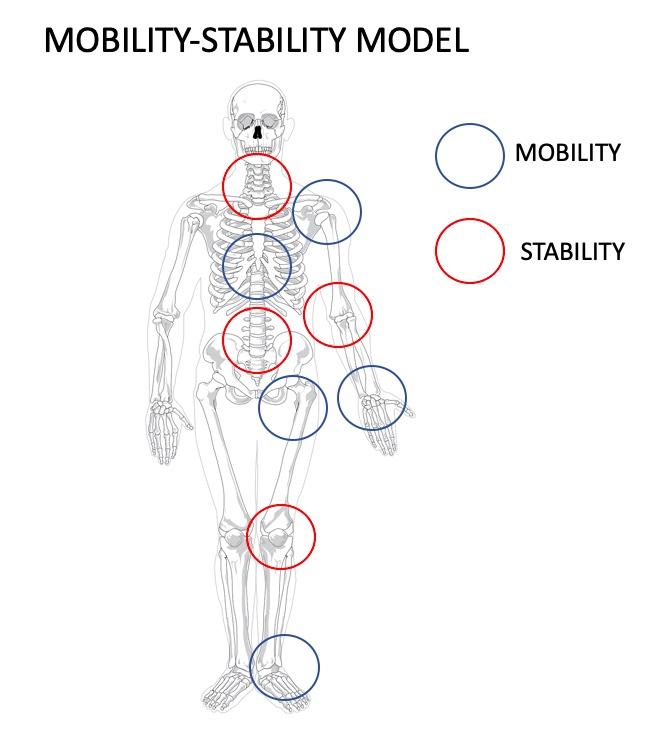In the intricate dance of the human body, mobility and stability are the choreographers that determine how well we move and function. Each joint in our body is unique, requiring a delicate balance of mobility and stability to perform its designated role seamlessly. In this blog, we’ll explore the fascinating mobility and stability model for various joints and how understanding this dynamic can unlock the potential for optimal movement and injury prevention.
The Mobility-Stability Continuum:
- Ankle Joint:
- Mobility: The ankle joint demands a considerable range of motion for activities like walking, running, and jumping.
- Knee Joint:
- Stability: The knee relies heavily on stability to prevent unwanted sideways or twisting movements. Strengthening the muscles around the knee is key for stability.
- Hip Joint:
- Mobility: The hip joint is a ball-and-socket joint, allowing for a wide range of motion in various directions.
- Lumbar Spine:
- Stability: Core muscles play a vital role in stabilizing the lumbar spine, preventing excessive movement that could lead to injuries.
- Thoracic Spine:
- Mobility: The thoracic spine is designed for rotation and extension to allow for a flexible upper body.
- Shoulder Joint:
- Mobility: The shoulder joint is incredibly mobile, allowing for a wide range of arm movements.
- Elbow Joint:
- Stability: Stabilizing muscles around the elbow, including the forearm muscles, are crucial for preventing strain and overuse injuries.
- Wrist Joint:
- Mobility: The wrist, inherently mobile, allows for intricate movements of the hand and fingers.

The Importance of Balance:
Understanding the mobility and stability needs of each joint is crucial for injury prevention and optimal performance. Imbalances in this model can lead to overuse injuries, strains, and decreased functional capacity. A well-rounded fitness routine that includes both mobility and stability exercises can address these imbalances and promote joint health.

The mobility and stability model is the blueprint for graceful, efficient movement. By acknowledging the unique needs of each joint and incorporating exercises that foster this delicate balance, we empower our bodies to move with precision and strength. It’s not just about the quantity of movement; it’s about the quality, ensuring that each joint performs its role harmoniously in the symphony of motion that is the human body.

